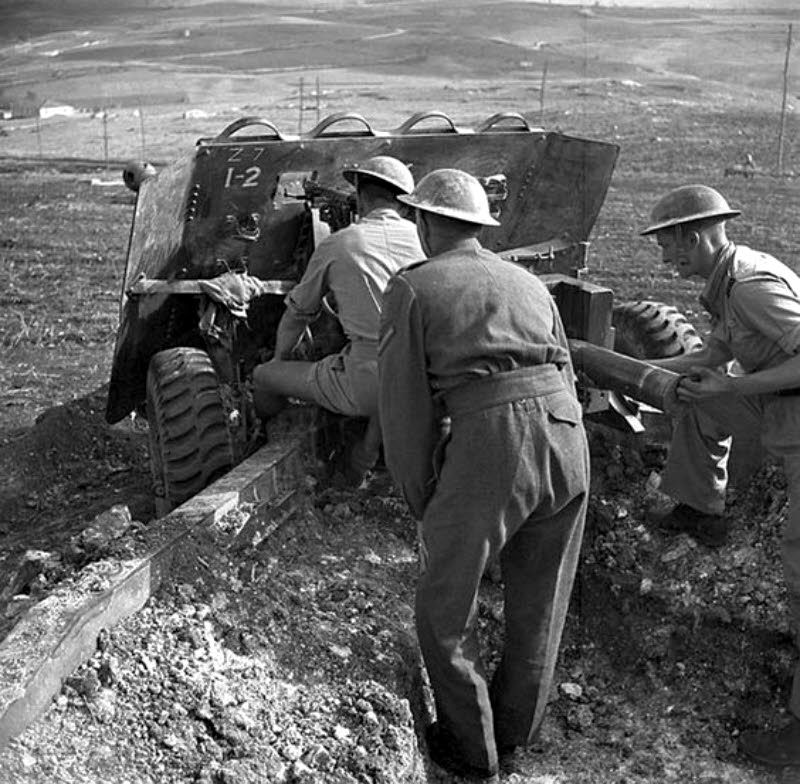
Byron Dickson was born on the 17th June 1919, the eldest child of three children born to Henry Dickson and Violet Hallgarth who were married in the Doncaster area in late 1916. Henry died, aged 46 years, in summer 1934 and Violet subsequently re-married, colliery ripper, Samuel Lingard in the spring of 1935.
Violet was born in Ossett on 9th February 1894, one of eight children; four of whom died before 1911. In this latter year Violet was living with her parents and one sibling at Poplar Terrace, Calder Grove, Wakefield and she appears to have been living in the same house in 1939 with her second husband and youngest child, Betty, from her first marriage to Henry Dickson.
Byron Dickson of 4 Poplar Terrace, Millfield Road, Horbury died on the 20th November 1944 on war service and administration was made to his mother, Violet Lingard (wife of Samuel Lingard) on the 12th March 1945. His effects were £118 6s 6d.
58 (Duke of Wellington’s) Anti-Tank Regiment, Royal Artillery was part of 46 Division during WW2. The 46 Infantry Division was a second line Territorial Army formation, which was formed in 1939 as a duplicate of the 49 (West Riding) Infantry Division. It was deployed to France in April 1940 on training and labour duties. It remained in the U.K. re-equipping and refitting until leaving for North Africa on the 6 January 1943. It transferred to X Corps in July 1943, and landed with the corps at Salerno in Italy on 9 September 1943. The division fought in the battles for the capture of Naples, the Volturno Crossing and the capture of Monte Camino, all under command of X Corps. It left Italy on 16 March 1944 bound for Egypt. It moved to Palestine in April 1944 and then back to Egypt in June. The division returned to Italy on 3 July 1944 and fought in the Gothic Line battles. The division was withdrawn from the line and was hurriedly transferred to Greece on 14 January 1945 to fight in the Greek Civil War. It returned to Italy on 11 April 1945. It moved onto into Austria on the 12 May.

Above: Anti-Tank Regiment gun shown in action near Campobasso, Italy, 25th October 1944.
Bombardier Byron Dickson died of wounds on the 20th November 1944 aged 25 years after being injured whilst on active duty. He is buried at Meldola War Cemetery, Italy, Grave I.D. 15. On 3 September 1943 the Allies invaded the Italian mainland, the invasion coinciding with an armistice made with the Italians who then re-entered the war on the Allied side.
Following the fall of Rome to the Allies in June 1944, the German retreat became ordered and successive stands were made on a series of defensive lines. In the northern Appenine mountains the last of these, the Gothic Line, was breached by the Allies during the Autumn campaign and the front inched forward as far as Ravenna in the Adriatic sector, but with divisions transferred to support the new offensive in France, and the Germans dug in to a number of key defensive positions, the advance stalled as winter set in.
Meldola War Cemetery was originally a battlefield cemetery of the 46th Division, into which a few burials were concentrated; they all date from the last week of October and the month of November 1944. Meldola itself was taken on 30 October, and in the ensuing month the 46th and 4th Divisions advanced to the Lamone River.
Meldola War Cemetery contains 145 Commonwealth burials of the Second World War.
References: